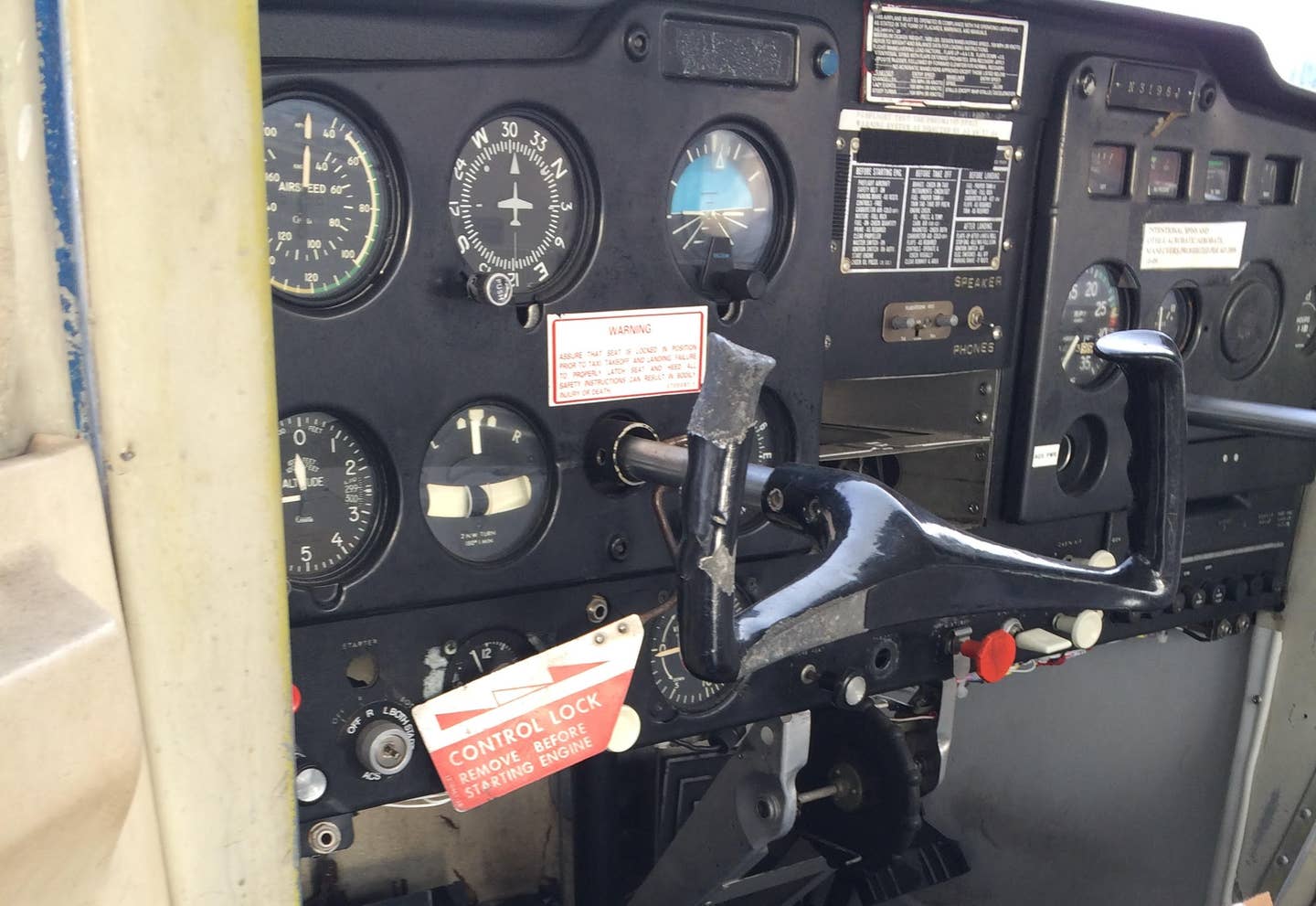Should You Fast-Track Your CFI?
It’s a popular question, but here are four reasons why you might want to do your CFI and CFII part 61.

Having a training partner can help you move your training along faster. [Credit: Adobe Stock]
I completed most of my flight training in a Part 141 environment, from my single-engine airplane private pilot certificate to my multiengine commercial certificate. These met the requirements set by the FAA for graduating from a structured Part 141 training program. It’s organized that way with training modules and specific hourly requirements to earn the benefit of a restricted airline transport pilot certificate, or R-ATP.
It also offered a streamlined path for someone like me who didn’t know much about the industry before I began. However, after a few courses, I admit, I saw instances when I could go faster. The volume of students in a Part 141 program—at least the one I was in—meant less flexibility. You had to make the most of your training block, or you might delay your course completion. There were other factors that could delay your progress—all beyond your control. So, the irony of training under a Part 141 umbrella was that the embedded structure limited speed, flexibility, and more likely cost more for the premium in services that it offers.
But, what if you understood what needed to be done and had the wherewithal to take matters, somewhat, into your own hands? Should you do it?
Absolutely!
When it was time for me to earn my CFI and CFII certificates—aside from an external urgency I had to get it done—I wanted to experience the nuances of the Part 141 versus Part 61 training world. For instance, recently, someone asked me if pilots had to fix things on their airplanes, and I laughed because the other value—or, conversely, limitation—of a Part 141 training environment concerns its typically structured maintenance services.
“The transition from training through course modules to training to meet a deadline forced me to think about the check ride from the beginning, and stripped away any unnecessary things I might have frittered my time away doing. ”
I explained that the only thing I had to do in the program I was in was call dispatch for maintenance and for that person to basically say whether I could fly or not, per department rules. It was almost too easy to not go through the regime of determining if and how to fly with a piece of equipment that didn’t work.
To this day, I believe there are classmates who are now professional pilots, who outside of the structured environment, wouldn’t know how to proceed if they had to independently make a confident go/no-go assessment, and it isn’t all their fault. The entire premise of many Part 141 training programs is that you can almost be guaranteed a sure path to work as a professional pilot—and to learn to operate in very controlled circumstances.
Meanwhile, if you’re training within a Part 61 structure, if something breaks—and you need to know if you can go or not—tag you’re it! If you made the switch like I did when I was working on my CFI, you now had to exercise the principle of being pilot in command and being fully responsible for determining if the airplane was airworthy—and subsequently the safe outcome of a planned flight.
So you can imagine that—despite the expensive training that was behind me—the first time I got into an airplane that was older than me to work on my instructor course, I was a little concerned. Maybe I shouldn’t have gone to the other extreme. I had to be sure for myself this time around. The fact that I had to earn back-to-back sign-offs for the initial CFI and instrument instructor rating in 30 days didn’t make it easier.
To be fair, you could move fast in a Part 141 structure too, but there would be less wiggle room, as you will be competing for training slots in high demand. Plus, there would still be plenty of ‘help’ to see that you meet a deadline.
So if both parties are deadline-focused, why should you get your CFI under Part 61? Here are some things to consider:
With the right habits in place, you can move faster.
If your goal is to make a living as a pilot, even as a CFI, it’s incumbent that you don’t get stuck in flight training. Airline-fairing pilots will tell you that seniority is everything. That isn’t what I’m making the case for, however, especially if you plan to use being a CFI as a pathway to get to the airlines.
Nor am I arguing for the “wham-bam, certificate at all cost” approach. Neither am I suggesting that an examiner is going to just pass you under either program. After all, you still have to meet the requirements and minimums to earn a certificate satisfactorily. Yet, we all know some certificated pilots who maybe should’ve warranted a second look by an examiner.
So, in the end, it is up to you to ensure that you are actually a safe pilot. It’s tempting to think you will form better habits later—and so you should rush ahead now—but the chances are you will have fewer training opportunities the further along you get. And you’ll have formed poor habits in the interim.
“Do you have an amazing flight instructor? Tell us about them! E-mail us at editorial@flying.media.”
However, I think, with the right habits in place, as I assumed I formed in my initial Part 141 and then Part 61 training, it is okay to move a little faster. The transition from training through course modules to training to meet a deadline forced me to think about the check ride from the beginning, and stripped away any unnecessary things I might have frittered my time away doing.
It also helped that I had a training partner. When I was able to earn signoffs for both check rides in such a compressed time—in a different airplane than I was used to—and in an overall different structure, this actually was formative for how I would train my own students when I return to my Part 141 instructor role.
I now understood how to set an end date with students from the start, because even if we were a little off, they would surely get done faster than their classmates, and kept them focused on the core things.
So, why not do the entirety of training for an ATP under Part 61? Well, the tradeoff in time for earning the R-ATP minimums favors the Part 141 approach, which I think makes sense if you want to work professionally in the airline world. But if you don’t have time to go back to college, and can spend the time to find a diligent instructor at your local flight school or FBO and train under Part 61, I encourage you to lean into that.
Cost: You are on the cheapest route.
Flying is expensive. By the time you get to your CFI, you probably are nearing $100,000 in training expenses. Ouch! If you add a four-year degree on top of that, you could’ve mortgaged a decent house in a nice neighborhood. So, even with training delays, compressing your training allows you to maintain your proficiency, and reduces repeats, which means you will save tons of money. To be clear, the cost is directly tied to speed.
As long as you have a dependable airplane and competent instructor, even with a few bad weather days and reviews, the cheapest way to fly is to go fast. While it will benefit to go slow-ish when you’re just beginning, once you’ve developed good habits, I suggest you make the trade-off between the premium comfort of structured training to efficient and cost-effective training.
Maturity: You become PIC faster.
Most instructors will admit gaining their CFI certificate was the hardest leap. The transition from the left seat to the right requires that students become teachers faster than they can mentally adjust. I suspect this is why some people prefer the scenic route because they fear the weight of the responsibility on their shoulders.
However, if you look at it another way, is there a better way to fast-track your personal maturity?
I argue that this would have benefited me as a student, as it wasn’t until after gaining my CFI and finding myself in a difficult spot that I was able to make the final leap—and even then it was too late for me. Indeed, having to make and deliver lesson plans forced me to know why I was doing what I was doing, and through my own way, I took more ownership of my journey as a pilot. As uncomfortable as I was going fast, that experience forced me to mature more quickly and made me a more knowledgeable, and safer pilot ultimately. I realized how much I actually didn’t know, and how much more I had to learn.
On the Job Training: Teaching is how you learn to teach.
Making the perfect lessons is a myth. Until you stand and deliver and get another student to solo or take a check ride, you won’t really know what you know, or if you’re doing it right. In a world where pilots aren’t working as CFIs as a pass-through job, doing well is important, and you won’t know if you are until you actually interact with real students.
So, the faster you get on the job, if you have a framework for course-correcting rather than perfection, you’ll be a better instructor overall. In fact, you’ll learn to teach with empathy because you’ll understand and demonstrate to your students that learning is a journey.
To be honest, earning my CFI and CFII at a faster pace than I was used to was a culture shock. I was so nervous the day before my CFI check ride that I called the examiner to reschedule, obviously to his annoyance. To my detriment, I sank back into the mindset that I had to perform perfectly, and I almost sabotaged the entire process, telling myself I needed to study more, beyond what my overseeing instructors recommended.
Plus, when I did take the actual check ride, I wasn’t as nearly as perfect as I hoped to be, and still passed. Still, even with my self-inflicted delay, which took longer and cost more, I still saved much more than the alternative way. Now, every chance I get to give advice to incoming students, I encourage them to embrace the challenge of fast-tracking their instructor training.
I’d love to hear from you. Do you think speed is important in training? What are some tips you have? Send me a line at michael@flying.media and let’s discuss.

Subscribe to Our Newsletter
Get the latest FLYING stories delivered directly to your inbox






